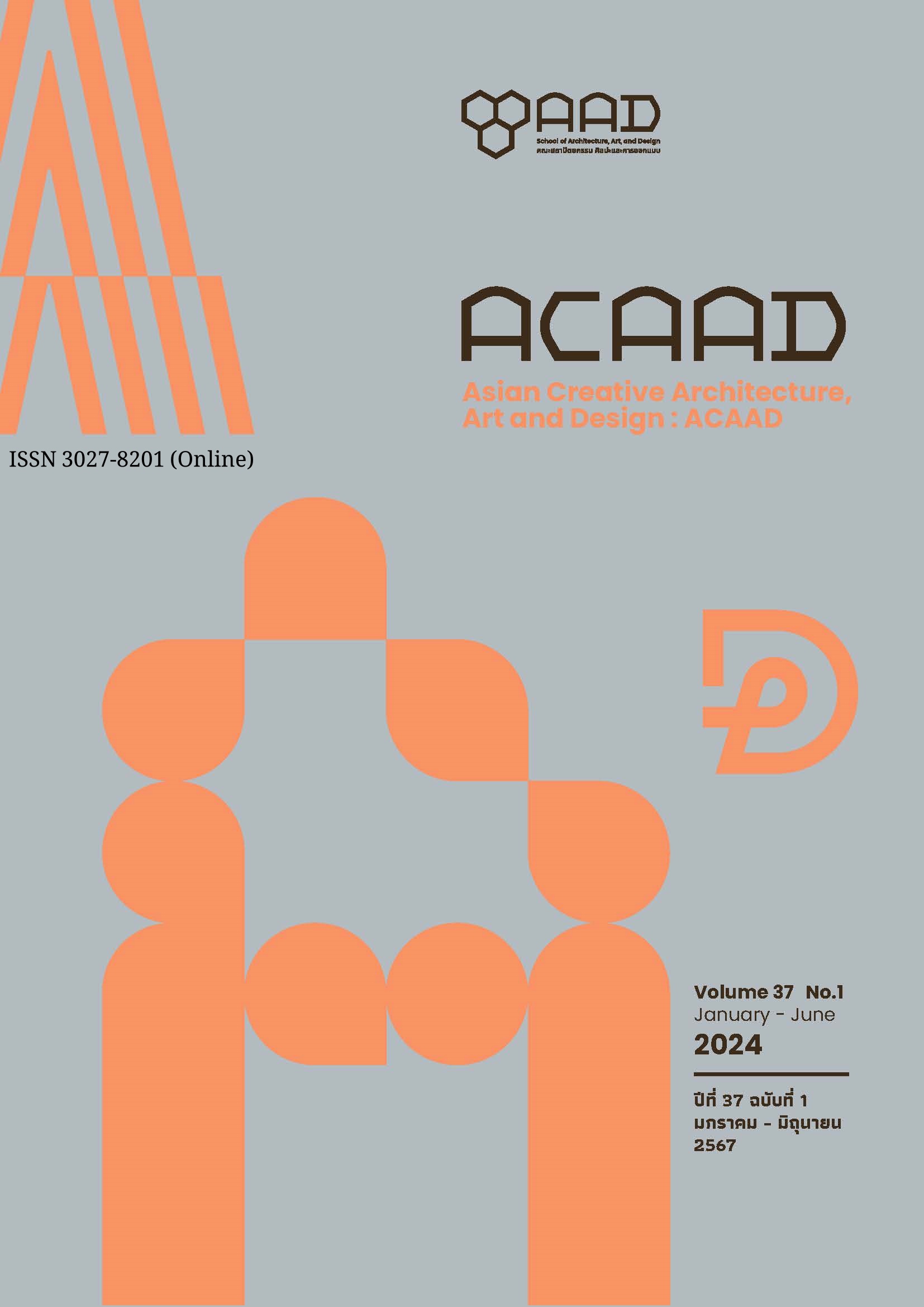Gentrification of Communities Surrounding Chedi Luang Worawiharn Temple, Sri Phum Subdistrict, Muang District, Chiang Mai Province
Main Article Content
Abstract
Modification of building structure and use by new investors to achieve increased economic returns by pushing former residents out of the areas is the process of gentrification.The purpose of this article is to investigate the gentrification of communities surrounding Chedi Luang Worawiharn Temple, Sri Phum subdistrict, Muang district, Chiang Mai province, and to analyze changes in the gentrification phenomenon during the coronavirus disease 2019 situation. Data collection was composed of physical surveying, interviews, and questionnaires. Three major groups were interviewed including 18 persons from the original community, 15 newcomers, and 10 community leaders and government officials. The 268 questionnaires were sampled in three communities including the Phra Chao Mengrai Samakkhi community, the Chang Taem community, and the Phranon community.
The study found that there is mostly commercial land use in all three communities. Most of the new occupants used to live in the central region. The study area has three stages of gentrification. The development process begins with the first stage, early development, and then completes development in the second stage, and lastly to the third stage, which is the community's adaptation to the emergence of the gentrification phenomenon. The study also discovered that, before the emergence of coronavirus disease in 2019, the communities were significantly impacted by the economy due to gentrification, such as increased living costs and rent/land prices. While the rise of commercial and service businesses is a beneficial result of gentrification. During coronavirus epidemics, certain localities witnessed population declines whereas land prices climbed with a stagnant economy, increased speculation, and a drop in commerce and services. However, gentrification improves better relationships between former inhabitants and newcomers for overcoming the 2019 coronavirus disease outbreak.
Article Details

This work is licensed under a Creative Commons Attribution-NonCommercial-NoDerivatives 4.0 International License.
This work is licensed under a Creative Commons Attribution-NonCommercial-ShareAlike 4.0 International License.
Copyright Transfer Statement
The copyright of this article is transferred to Journal of The Faculty of Architecture King Mongkut's Institute of Technology Ladkrabang with effect if and when the article is accepted for publication. The copyright transfer covers the exclusive right to reproduce and distribute the article, including reprints, translations, photographic reproductions, electronic form (offline, online) or any other reproductions of similar nature.
The author warrants that this contribution is original and that he/she has full power to make this grant. The author signs for and accepts responsibility for releasing this material on behalf of any and all co-authors.
References
Alexandr, G., & Janoschka, M. (2020). ‘Post-pandemic’ transnational gentrifications: A critical outlook. Urban Studies 2020. 57(15), 3202–3214.
Atkinson, R., & Bride, G. (2005). Gentrification in a global context. Routledge taylor & francis group.
Cambridge Dictionary of American English. (2008). English definitions. https://dictionary.cambridge.org/dictionary/english/gentrification
Chaiya, C., & Pinthong, P. (2020, August 14). “COVIDization” The disruption of public health service in the new era; The analysis of “Samutprakan model” an opportunity in using of the innovation technologies for the “new normal” [Paper presentation]. The 11th National Conference on Public Administration, Chiang Rai Rajabhat University, Mueang Chiang Rai, Chiang Rai. (in Thai)
Chiang Mai Provincial Communicable Disease Control Committee. (2020). Order of the Chiang Mai Communicable Disease Committee No. 2/2020 regarding urgent measures to prevent crises from Coronavirus Disease 2019 (COVID - 19). http://www.chiangmai.go.th/covid19/command.html (in Thai)
Chiangmai Municipality. (2017). Community development plan for the year 2017. Chiangmai Municipality. (in Thai)
Chiangmai Municipality. (2022). Community development plan for the year 2022. Chiangmai Municipality. (in Thai)
Clay, P. L. (1979). Neighbourhood Renewal. Lexington Books.
Dhirasedh, S., & Boonprasong, P. (2023). Adaptive-Reuse of Timber Rowhouses in Hua Takhe Waterfront Community, Bangkok through Gentrification Phenomenon. Journal of The Faculty of Architecture King Mongkut's Institute of Technology Ladkrabang, 36(1), 37-57. (in Thai)
Han, S., Bohannon, C. L., & Kwon, Y. (2021). Degentrification? Different Aspects of Gentrification before and after the COVID-19 Pandemic. Land 2021, 10(11), 1234. https://doi.org/10.3390/land10111234
Lees, L., & Phillips, M. (2018). Handbook of Gentrification Studies. Handbook of Gentrification Studies.
Lees, L., Slater, T., & Wyly, E. (2007). Gentrification. Routledge.
Office of Chiang Mai Provincial Treasury. (2023). Land valuation information. https://chiangmai.treasury.go.th/th/appr aisal-information/ (in Thai)
Paulla, D, & Wakhidah, K. (2013). Gentrification Impact to the Community’s Quality of Life in Semarang Old Town. E3S Web of Conferences, 202(1), 1-19. https://doi.org/10.1051/e3sconf/202020202004
Pokharatsiri, C. (2003). Towards gentrification in urban conservation: the case of social impacts in Banglamphu area, [Master’s thesis]. King Mongkut's Institute of Technology Ladkrabang. (in Thai)
Pounpunwong, W. (2017). The development of rural into the urban A case study Doi Mon Cham, Mea Rim district, Chiang Mai province. The Political Science and Public Administration Journal, 8(2), 55–80. https://so05.tci-thaijo.org/index.php/polscicmujournal/article/view/107761 (in Thai)
Sisaat, B. (2010). Basic research. Suweerivasarn. (in Thai)
Suparatpreecha, V. (2010). Social and Cultural Impact of Tourism in Wat Ket Community, Chiang Mai Province [Master’s thesis]. Chulalongkorn University. (in Thai)
Twigg, M. (2020, August 11). Revitalization or displacement: What is gentrification really?. Matter. https://www.matternews.org/developus/gentrification-explained


